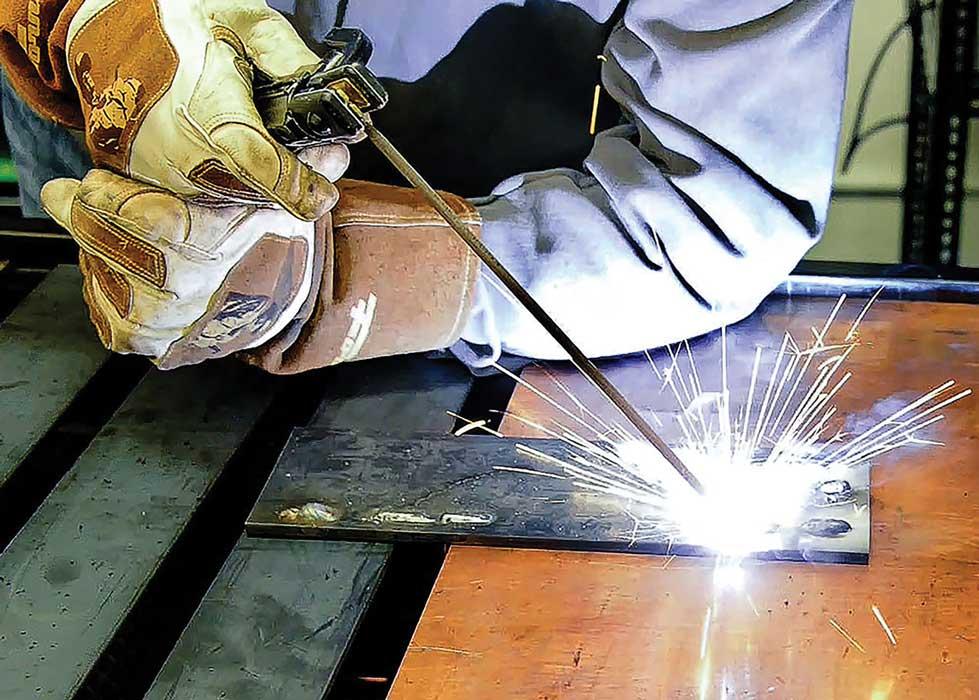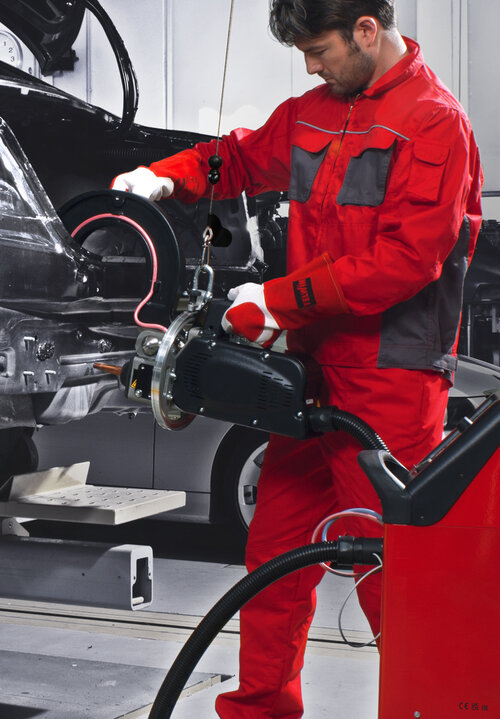Typical Welding Repair Issues and Exactly How to Address Them Efficiently
Welding repair services usually encounter a range of issues that can threaten the honesty of the end product. Common problems include insufficient penetration, porosity, and imbalance, to name a few. Each problem presents unique obstacles that call for specific strategies for resolution. Recognizing these problems is essential for welders aiming to improve their outcomes and skills. This discussion will discover these typical welding repair concerns and reliable techniques to address them.
Poor Penetration
Poor infiltration takes place when the weld steel fails to totally fuse with the base material, resulting in weak joints and potential structural failures. This issue frequently stems from inadequate warmth input, incorrect electrode angle, or incorrect welding speed. Welders may experience poor infiltration because of a miscalculation of the necessary specifications for a certain material density or kind. Furthermore, contamination on the base material's surface can prevent reliable bonding, intensifying the trouble. To attend to inadequate infiltration, welders ought to assure proper settings on their equipment and preserve a tidy job surface. Routine assessment of welds is suggested to identify any deficiencies early, permitting timely improvements and the prevention of jeopardized structural stability in bonded settings up.
Porosity
Porosity is a typical flaw in bonded joints that shows up as small gas bubbles entraped within the weld metal. This flaw can compromise the integrity of the weld, resulting in decreased strength and prospective failing under tension. Montana Mobile Welding and Repair Belgrade Fabrication. Porosity normally arises from contamination, dampness, or incorrect welding strategies, which enable gases to leave into the molten weld pool. To address porosity, welders ought to assure correct surface area prep work, preserve a clean workplace, and utilize suitable welding parameters. Additionally, picking the ideal filler product and securing gas can mitigate gas entrapment. Routine evaluation and screening of welds can aid recognize porosity early, assuring timely rehabilitative activities are taken, consequently maintaining the high quality and integrity of the bonded framework
Misalignment
Imbalance in welding can occur from numerous factors, including incorrect setup and thermal development. Recognizing the source is essential for efficient resolution. Numerous adjustment strategies are offered to realign components and assure architectural stability.
Causes of Imbalance
Welding imbalance typically comes from a selection of underlying issues that can jeopardize architectural integrity. One key reason is improper fit-up of elements before welding, which can result in voids and irregular surface areas. Variants in thermal development throughout the welding procedure can likewise result in distortion, specifically if the products being signed up with have different coefficients of growth. In addition, inadequate clamping and fixturing may fail to hold parts firmly in position, bring about motion throughout welding. Inadequately conserved devices, consisting of welding machines and devices, might present variances in the weld bead, further contributing to imbalance. Driver error, stemming from insufficient training or experience, can likewise play a significant duty in producing misaligned welds.

Improvement Techniques Offered
Attending to misalignment efficiently requires a mix of restorative techniques tailored to the details issues handy. One typical approach is using jigs or fixtures to hold parts in the appropriate setting throughout welding, guaranteeing regular placement. Additionally, pre-heating the materials can help in reducing distortion and improve fit-up. For significant imbalance, mechanical adjustment strategies, such as using hydraulic jacks or clamps, can be used to correct the placement before welding. Post-weld warm therapy may additionally be necessary to soothe anxieties created by imbalance. Ultimately, cautious inspection and adjustment during the setup stage can stop imbalance problems from coming to be significant problems, advertising a smoother welding process and enhancing general structural integrity.
Distortion
Distortion is a typical obstacle in welding that can arise from various variables, including uneven home heating and air conditioning. Comprehending the root causes of distortion is necessary for implementing efficient avoidance methods. Resolving this concern not just improves architectural integrity yet likewise improves the overall quality of the weld.
Sources of Distortion
When subjected to the intense warmth of welding, materials usually undertake adjustments that can bring about distortion. This phenomenon primarily develops from thermal growth and contraction throughout the welding process. As the weld area warms up, the material broadens; upon cooling, it acquires, which can produce interior stresses. Furthermore, unequal heating across a workpiece can worsen these stress and anxieties, resulting in warping or flexing. The kind of material likewise plays a significant function; metals with differing thermal conductivity and coefficients of growth might react in a different way, causing unpredictable distortions. Inadequate joint layout and inadequate fixturing can contribute to misalignment during welding, boosting the chance of distortion. Comprehending these causes is important for efficient welding fixing and avoidance approaches.
Avoidance Techniques
Effective prevention strategies for distortion during welding concentrate on regulating heat input and guaranteeing proper joint layout. Maintaining a consistent heat input assists to lessen thermal development try here and contraction, which can lead to distortion. Utilizing strategies such as pre-heating the work surface can likewise reduce the temperature level slope, advertising consistent heating. Furthermore, selecting proper joint designs, such as T-joints or lap joints, can enhance stability and reduce stress focus. Carrying out appropriate fixturing to protect the work surfaces in location even more help in keeping alignment during the welding process. Finally, staggered welding series can distribute warmth much more evenly, protecting against local distortion. By using these approaches, welders can greatly reduce the possibility of distortion and improve the total top quality of their welds.
Fracturing
Fracturing is a visit this site right here typical problem encountered in welding repair services, usually resulting from various aspects such as incorrect cooling rates, material option, or poor joint prep work. The incident of fractures can greatly compromise the integrity of the weld, causing prospective failings throughout operation. To address this issue, welders should initially analyze the source, making certain that products work and appropriately picked for the certain application. In addition, managing the air conditioning price during the welding procedure is crucial; fast air conditioning can induce stress and result in fracturing. Correct joint style and preparation likewise add to reducing the danger. Applying these strategies can enhance weld quality and longevity, ultimately reducing the likelihood of fracturing in completed weldments.

Insufficient Blend
A significant concern in welding repairs is insufficient fusion, which happens when the weld metal does not effectively bond with the base product or previous weld passes - Montana Mobile Welding and Repair. This flaw can result in weak points in the joint, possibly endangering the integrity of the welded framework. Elements adding to insufficient combination consist of insufficient warm input, incorrect welding method, and contamination of the surface areas being signed up with. To address this issue efficiently, welders need to assure correct pre-weld cleaning and surface prep work, as well as change their welding criteria to attain appropriate infiltration and fusion. Normal evaluation throughout the welding procedure can additionally aid identify insufficient blend early, permitting timely corrective actions to improve the total high quality of the weld
Overheating
While welding repair services can enhance structural honesty, overheating offers a considerable obstacle that can cause product destruction. Too much warmth throughout welding can alter the mechanical residential properties of he has a good point metals, leading to reduced toughness, increased brittleness, and bending. This sensation is specifically critical in high-stress applications where structural integrity is critical. Identifying getting too hot can include aesthetic assessments for discoloration or distortion, in addition to monitoring temperature level during the welding process. To reduce the threats linked with overheating, welders need to use suitable strategies, such as controlling warmth input, readjusting traveling rate, and making use of appropriate filler materials. Furthermore, implementing pre- and post-weld heat therapies can help restore material residential or commercial properties and enhance the total high quality of the fixing, making sure long-lasting efficiency and security.
Regularly Asked Questions
What Are the Common Signs of a Welding Issue?
Exactly How Can I Check My Welds for High quality?
To evaluate welds for quality, one can utilize visual examinations, ultrasonic screening, and radiographic methods. Each strategy guarantees architectural integrity, recognizes problems, and confirms adherence to defined criteria, ultimately boosting the dependability of the welded joints.
What Security Safety Measures Should I Take While Welding?
When welding, one ought to prioritize safety by using appropriate individual safety equipment, ensuring appropriate air flow, safeguarding flammable materials away, maintaining a clean office, and knowing environments to protect against accidents and injuries.
Can I Repair a Weld Without Remodeling the Entire Joint?
Repairing a weld without redesigning the entire joint is possible, depending on the damage (Montana Mobile Welding and Repair Belgrade Welding). Strategies such as grinding, including filler product, or utilizing a welding process can successfully attend to certain problems while maintaining the surrounding framework
What Equipment Are Crucial for Effective Welding Services?
Important tools for efficient welding repair services include a welding maker, wire brush, mill, safety equipment, clamps, and filler materials. Each device plays an essential duty in making certain top quality and safety and security during the repair service process. Porosity typically emerges from contamination, moisture, or inappropriate welding techniques, which allow gases to escape into the molten weld swimming pool. Poorly conserved devices, including welding equipments and tools, may introduce disparities in the weld grain, further contributing to imbalance. When subjected to the intense warmth of welding, materials typically undergo modifications that can lead to distortion. Cracking is a typical concern come across in welding repair services, frequently resulting from various variables such as incorrect air conditioning prices, material choice, or poor joint preparation. A substantial concern in welding repair work is insufficient combination, which occurs when the weld metal does not properly bond with the base product or previous weld passes.
Comments on “Tips from Montana Mobile Welding and Repair Belgrade prevent porosity and distortion in welding”